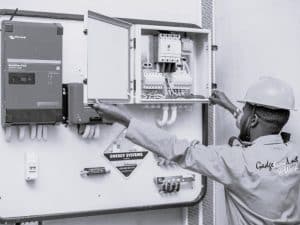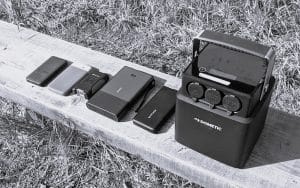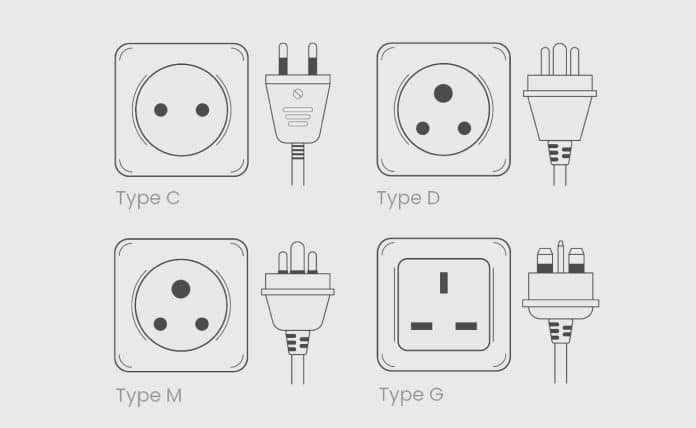Unlocking the Power: Everything You Need to Know About Adapters for Traveling to Kenya and Tanzania
Heading to Kenya and Tanzania for a thrilling adventure? Don’t forget to pack the right adapters to keep your devices powered up while exploring these incredible destinations. This comprehensive guide will answer your question: What adapter do I need for Kenya and Tanzania? And unlock the power of adapters, giving you everything you need to know to stay connected during your trip.
Whether you plan to capture breathtaking landscapes on your camera or use your smartphone to navigate local attractions, having the right adapter is crucial. Kenya and Tanzania use Type G plugs, also known as the British three-pin plug. We’ll explore the different types of adapters that are compatible with Type G plugs, including universal adapters and country-specific ones, helping you choose the best option for your needs.
Not only will we provide you with all the necessary technical information, but we’ll also dive into practical tips for using adapters in Kenya and Tanzania. We’ll cover topics such as voltage, power surges, and safety precautions to ensure that you have a hassle-free and enjoyable travel experience.
Prepare yourself for a seamless journey and avoid any power-related hurdles by mastering the art of adapters for traveling to Kenya and Tanzania. Let’s get started!
Why do you need an adapter for Kenya and Tanzania?
When traveling to Kenya and Tanzania, it’s important to understand the electrical systems in these countries, which is why your question, What adapter do I need for Kenya and Tanzania, is valid and vital. These countries operate on a different voltage and use a different type of plug compared to what you might be accustomed to in your home country. The standard voltage in Kenya and Tanzania is 240 volts, while the United States and Canada, for example, use 120 volts. The plug type used in Kenya and Tanzania is Type G, which has three rectangular pins in a triangular pattern.
Understanding the electrical systems in Kenya and Tanzania

Before delving into the different types of adapters available, it’s essential to understand the electrical systems in Kenya and Tanzania. As mentioned earlier, the standard voltage in these countries is 240 volts. This means that if your electronic devices are not compatible with 240 volts, you will need a voltage converter or transformer in addition to an adapter. Failure to use a voltage converter with devices that are not compatible with 240 volts can damage your devices.
Additionally, it’s worth noting that power outages and fluctuations can occur in Kenya and Tanzania, particularly in more remote areas. Investing in surge protectors or voltage stabilizers is advisable to protect your devices from power surges and ensure their longevity.
Types of adapters for Kenya and Tanzania
Now that we have a basic understanding of the electrical systems in Kenya and Tanzania, let’s answer your question what adapter do I need for Kenya and Tanzania and explore the different types of adapters available. When it comes to Type G plugs, there are two main options: universal adapters and country-specific adapters.
Universal adapters are versatile and can be used in multiple countries, including Kenya and Tanzania. These adapters usually come with interchangeable plugs that can be adjusted to fit different socket types. They are a convenient option if you frequently travel to different countries with varying plug types. However, keep in mind that universal adapters tend to be bulkier and may not fit as snugly in sockets compared to country-specific adapters.
On the other hand, country-specific adapters are designed specifically for use in Kenya and Tanzania. They are compact and fit snugly into Type G sockets, ensuring a secure connection. Country-specific adapters are often more affordable and readily available in local stores and airports in Kenya and Tanzania. If you only plan to visit these countries, a country-specific adapter is a reliable and cost-effective choice.
Choosing the right adapter for your devices
When choosing an adapter for your devices, it’s important to consider their power requirements. Some electronic devices, such as laptops and cameras, have built-in voltage converters and can handle a wide range of voltages. In this case, you will only need an adapter to physically plug your device into the socket.
However, other devices, such as hairdryers and curling irons, may not be compatible with 240 volts. These devices require a voltage converter or transformer in addition to an adapter. It’s crucial to check the voltage compatibility of your devices before traveling to Kenya and Tanzania to avoid any potential damage.
Additionally, consider the number of devices you will be using simultaneously. If you have multiple devices that need to be plugged in, opt for an adapter with multiple outlets or a power strip. This will allow you to charge multiple devices simultaneously without the need for multiple adapters.
Where to buy adapters for Kenya and Tanzania

Now that we have provided answers to your question: What adapter do I need for Kenya and Tanzania? And you now know which type of adapter to choose, the next question is where to buy them. Adapters can be purchased from various sources, both online and offline.
If you prefer the convenience of online shopping, websites such as Amazon, eBay, and specialized travel gear retailers offer a wide selection of adapters. Make sure to check the customer reviews and ratings to ensure the quality and reliability of the adapters.
If you prefer to purchase adapters in person, local stores in your home country may have them available. Alternatively, you can also find adapters in airports, electronics stores, and travel gear shops in Kenya and Tanzania. Keep in mind that prices may vary, so it’s a good idea to compare prices and read reviews before making a purchase.
Tips for using adapters in Kenya and Tanzania
Using adapters in Kenya and Tanzania is relatively straightforward, but there are a few tips to keep in mind to ensure a smooth experience. First and foremost, make sure to plug your adapter securely into the Type G socket. A loose connection can cause intermittent power supply or damage your devices.
It’s also advisable to unplug your devices when not in use to prevent any power surges or fluctuations that may occur. Additionally, avoid using adapters with high-power devices for an extended period to prevent overheating. If you notice any unusual smells or smoke coming from your adapter, disconnect it immediately and seek assistance.
Lastly, it’s always a good idea to carry a spare adapter in case of emergencies or if you need to charge multiple devices simultaneously. Having a backup adapter ensures that you won’t be left without a means to charge your essential devices.
Common problems and troubleshooting with adapters
While adapters are designed to make your life easier, there can be some common problems that you may encounter. One common issue is when the adapter does not fit snugly into the socket, resulting in a loose connection. In this case, try gently wiggling the adapter while it is plugged in to establish a more secure connection.
Another problem you may face is when the adapter gets stuck in the socket. This can happen due to the tight fit or if the adapter is not designed correctly. If you find yourself in this situation, try using a pair of pliers or a grip tool to carefully remove the adapter. However, be extremely cautious not to damage the socket or the adapter in the process.
If your devices are not charging or receiving power despite being plugged in, check the voltage compatibility and ensure that your devices are compatible with 240 volts. If necessary, use a voltage converter or transformer to match the voltage requirements of your devices.
Other essential travel accessories for Kenya and Tanzania

While adapters are essential for staying connected, there are a few other travel accessories that can enhance your experience in Kenya and Tanzania. Consider investing in a portable charger or power bank to keep your devices charged on the go, especially if you’ll be spending a lot of time outdoors or in areas without accessible power outlets.
A travel surge protector is also a valuable accessory to protect your devices from power surges and fluctuations. It provides an extra layer of security and peace of mind, particularly in areas where power outages are common.
Lastly, a universal USB charger with multiple ports can be a convenient addition to your travel gear. It allows you to charge multiple devices simultaneously using a single power outlet. This can be particularly useful if you have limited access to power outlets or if you’re traveling with a group.
Final tips for traveling with adapters
This article has answered your question: What adapter do I need for Kenya and Tanzania? Adapters are a must-have item when traveling to Kenya and Tanzania to ensure that your devices remain powered up throughout your trip. Understanding the electrical systems in these countries, choosing the right adapter for your devices, and following proper usage tips will help you avoid any power-related issues and enjoy a seamless travel experience.
Remember to check the voltage compatibility of your devices and consider using voltage converters or transformers if necessary. Determine whether a universal adapter or a country-specific adapter suits your needs best, and purchase them from reputable sources before your trip.
Carry spare adapters and familiarize yourself with troubleshooting tips in case of any unexpected problems. Additionally, consider investing in other travel accessories, such as portable chargers, surge protectors, and USB chargers, to enhance your overall travel experience.
By unlocking the power of adapters, you can confidently capture memories, navigate unfamiliar territories, and stay connected with loved ones while immersing yourself in the wonders of Kenya and Tanzania. Happy travels!
For more articles related to Technology in Tanzania, click here!
































